Session Description
This session aims to highlight recent advancements in sea-surface temperature (SST), with a particular focus on the calibration and validation of satellite-derived SST products and the assessment of their quality and applicability, and a focus on in-situ/FRM datasets and inter-comparisons.
The session will focus on the following:
- Calibration and inter-calibration of satellite instruments.
- Validation of satellite-derived SST products.
- Comparisons between satellite data products and in situ measurements.
- Inter-comparisons of satellite data products from various platforms and sensors.
- Quality control and quality assurance of satellite data products.
- Evaluation of uncertainties and error sources in SST products.
Keywords: calibration, intercalibration, validation, product assessment, inter-comparison, quality control, quality assurance, uncertainties, evaluation, error sources
Keynote
Derivation and Validation of over two decades of skin SST retrievals from MODIS on Terra and Aqua
Peter Minnett, RSMAS, University of Miami
Following a bachelor’s degree in Physics from the University of Oxford in the UK, Peter earned a PhD in Physical Oceanography from the University of Southampton in 1978. Since 1995, Peter has been on the faculty of the Rosenstiel School of Marine, Atmospheric and Earth Sciences at the University of Miami, where his primary research focus has been on improving our understanding of the upper ocean temperature structure, particularly the thermal skin layer and diurnal heating effects, and of infrared radiative transfer through the atmosphere to improve the accuracy of skin sea surface temperature derived from satellites.
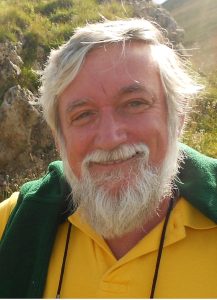
Talks
Fiducial Reference Measurements for SST and sea-ice
Anne O’Carroll, EUMETSAT
Anne is an Ocean Remote Sensing Scientist and Sentinel-3 Sea Surface Scientist at EUMETSAT. She is currently leading the Sea Surface Temperature Radiometry team in the Marine Applications area. Activities are related to Surface Temperature for both ocean and sea-ice, including on SST from Metop IASI, Sentinel-3 SLSTR, and collaboration within the EUMETSAT OSI-SAF.

On Potenital Contribution of TICFIRE on HAWC/AOS Mission for SST Validation and Applications
Jean-Pierre Blanchet, UQAM
Assessing the impact of additional L4 analyses in the Met Office GMPE product
Chongyuan Mao, Met Office
Chongyuan is a Senior Ocean Scientist in the Marine Observations Processing and Analysis team. She works on the maintenance and development of the Operational Sea Surface Temperature and Sea Ice Analysis (OSTIA) system and evaluation of ocean forecasting systems. Chongyuan joined the Ocean Forecasting Research and Development group at the Met Office in September 2014. Prior to this she completed a PhD at the University of Southampton, investigating the physical mechanisms of the sea surface temperature (SST) annual cycle and its impact on the phytoplankton blooms in the North Atlantic.
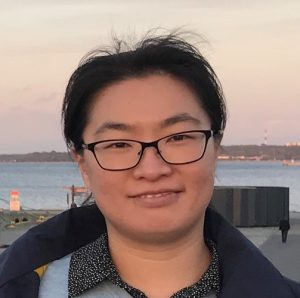
SOFS SST applications: validation of IMOS nighttime Geo-Polar Multi-Sensor L3S skin SST and investigation of SST fronts in the Southern Ocean
Haifeng Zhang, Bureau of Meteorology
Haifeng Zhang is currently a Marine In Situ Observation Scientist at the Australian Bureau of Meteorology. He obtained his PhD degree in Oceanography at University of New South Wales (Canberra) in 2017. His research interests include air-sea interactions, and sea surface temperature (SST), in particular satellite SST validation, in situ SST data collection and quality control, diurnal variation and cool skin effect, etc. He is an elected member of the GHRSST Science Team.
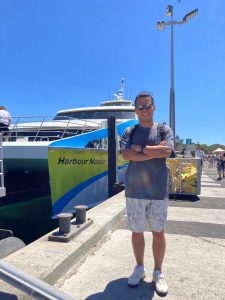
Posters
Examination of the performance of 22 CMIP6 ESMs on large scale changes in the atmosphere and oceans (North Atlantic, Arctic and North Pacific)
Zeliang Wang, Bedford Institute of Oceanography
Dr. Wang got his Ph.D from Tianjin University, China, in 1997. He worked as a senior engineer for a couple of years at China Institute of Water Resources and Hydropower Research. He started his career in Canada from 2004 as a modeler in NAFC, Newfoundland, then as a research associate at Dalhousie University. Since early 2008, he has been working at Bedford Institute of Oceanography. He is a research scientist. His recent research activities are focused on climate changes, and particularly mechanisms driving ocean variability.
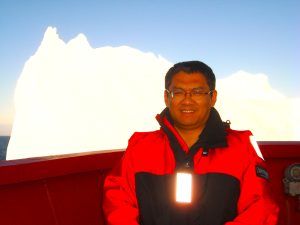
Error models for ICOADS SST from ships and moorings based on ESA CCI SST Analyses
Alexey Kaplan, Lamont-Doherty Observatory of Columbia University
Alexey works at Lamont-Doherty Earth Observatory (LDEO) of Columbia University. He studies climate variability and reconstructs climate from instrumental data and paleoclimate proxies using data assimilation methods. Alexey is particularly interested in better understanding and modeling errors occurring in satellite and in situ SST observations aiming to use such models to improve SST reconstructions for the pre-satellite era. He also helps to produce LDEO monthly ENSO forecasts with an intermediate climate model. M.S. in Applied Math and Ph.D. in Fluid Dynamics.
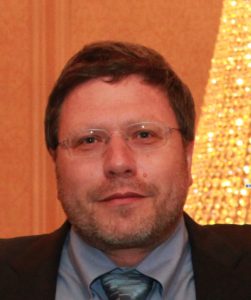
ECOSTRESS Calibration and Bias Correction by In-Orbit Comparison with CrIS and IASI
David Wethey, University of South Carolina
I am a member of the ECOSTRESS Science Team and the GHRSST Task Team on Climatology and L4 Inter-Comparison. My current NASA projects are 1) High Resolution Sea Surface Temperature from ECOSTRESS (J Vazquez Cuervo, CoPI), and 2) ECOSTRESS – Heat and Desiccation Risk Prediction in Intertidal Shellfisheries (S A Woodin and T J Hilbish, CoPIs). I am Professor Emeritus of Biological Sciences at the University of South Carolina.
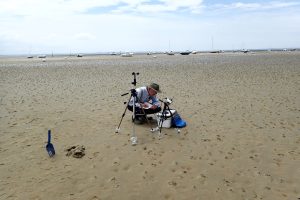
Observations of Oceanic Skin and Bulk Temperatures in the Seas Surrounding the Korean Peninsula and the Northwest Pacific Using ISAR
Kyung-Ae Park, Seoul National University
Kyung-Ae Park is a professor at the Department of Earth Science Education, Seoul National Univeristy in Korea. Her research activities are related to sea surface temperature (SST) variability, retrieval of SST and surface current from Korean geostationary satellites (COMS, GK-2A) and near-polar orbiting satellites, and oceanic applications of diverse satellite data.
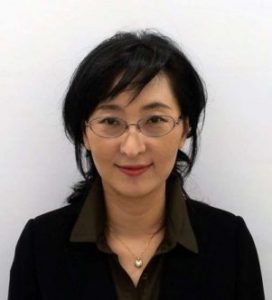
Cross-calibration of Himawari-9 SST for improved assessment of AMSR2 SST
Yukio Kurihara, JAXA
Yukio is a part-time researcher at JAXA/EORC, in charge of the algorithms for GCOM-C SST, Himawari-8 SST, and other IR SSTs provided by JAXA. Validation of remote sensed SSTs, which includes AMSR2 SSTs, is also part of his jobs.
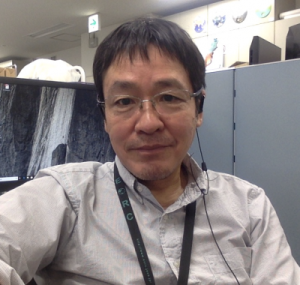
Relative Performance Assessment of the Operational SST Products from INSAT-3D and 3DR Imagers
Rishi Kumar Gangwar, Space Applications Centre, ISRO
Dr. Rishi Kumar Gangwar received his M.Sc. and Ph.D degrees in Physics from Banaras Hindu University, Varanasi and Gujarat Univeristy, Ahmedabad, India in 2007 and 2016, respectively. Rishi is currently a Scientist/Engineer at the Indian Space Research Organisation where Rishi is responsible for the development of the operational retrieval algorithms for SST and TPW from Indian satellites.
Dr. Rishi Kumar Gangwar’s research interests include satellite remote sensing of sea surface temperature, atmospheric temperature and humidity progiles, radiative transfer simulation, development of AI/ML based retrieval algorithms and the development of the algorithms for retrieval of geophysical parameters from space-born sensors.

NOAA ACSPO V2.80 Thermal Fronts Product
Irina Gladkova, NOAA Center for Weather and Climate Prediction
Historical and Near-real Time Geostationary ACSPO SST Products from GOES and Himawari Series Satellites
Victor Pryamitsyn, NOAA/NESDIS/STAR
Simplifying and Improving in situ Skin Temperature Measurements
Andrew Jessup, Applied Physics Laboratory, University of Washington
Andy received his PhD from the MIT/Woods Hole Oceanographic Institution Joint Program in 1990 and has been at the Applied Physics Laboratory at the University of Washington since then. Andy’s research has been in infrared imaging techniques to study mixing processes at air-water interfaces in the laboratory and field. Andy also develops infrared radiometer systems to accurately measure the ocean skin temperature.
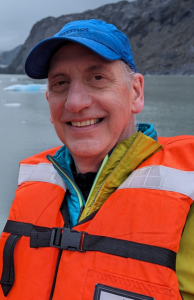
A reprocessing of 1km Level 1 data from AVHRR HRPT archives and of the (A)ATSR series
Jonathan Mittaz, University of Reading
Contribution of SLSTR datasets from Sentinel 3A and Sentinel 3B to CMC SST analysis
Dorina Surcel Colan, Numerical Marine Environmental Prediction, National Prediction Development Division, Meteorological Service of Canada, Environment and Climate Change Canada
NOAA ACSPO V2.80 Thermal Fronts Product
Irina Gladkova, NOAA Center for Weather and Climate Prediction
Irina Gladkova received a B.Sc. degree in mathematics from Donetsk State University, Ukraine, in 1989, a Ph.D. in physical/mathematical sciences from the Institute of Applied Mathematics and Mechanics of the National Academy of Sciences of Ukraine in 1993, and a Ph.D. In Mathematics from The Graduate Center of the City University of New York in 1998. She has been a faculty member of City College of New York since 1998, where she is an Associate Professor in the Department of Computer Science. She works extensively with engineers and scientists on a variety of applied problems in the area of signal processing and statistical data analysis including processing of remote sensing sensor data for Earth monitoring.
